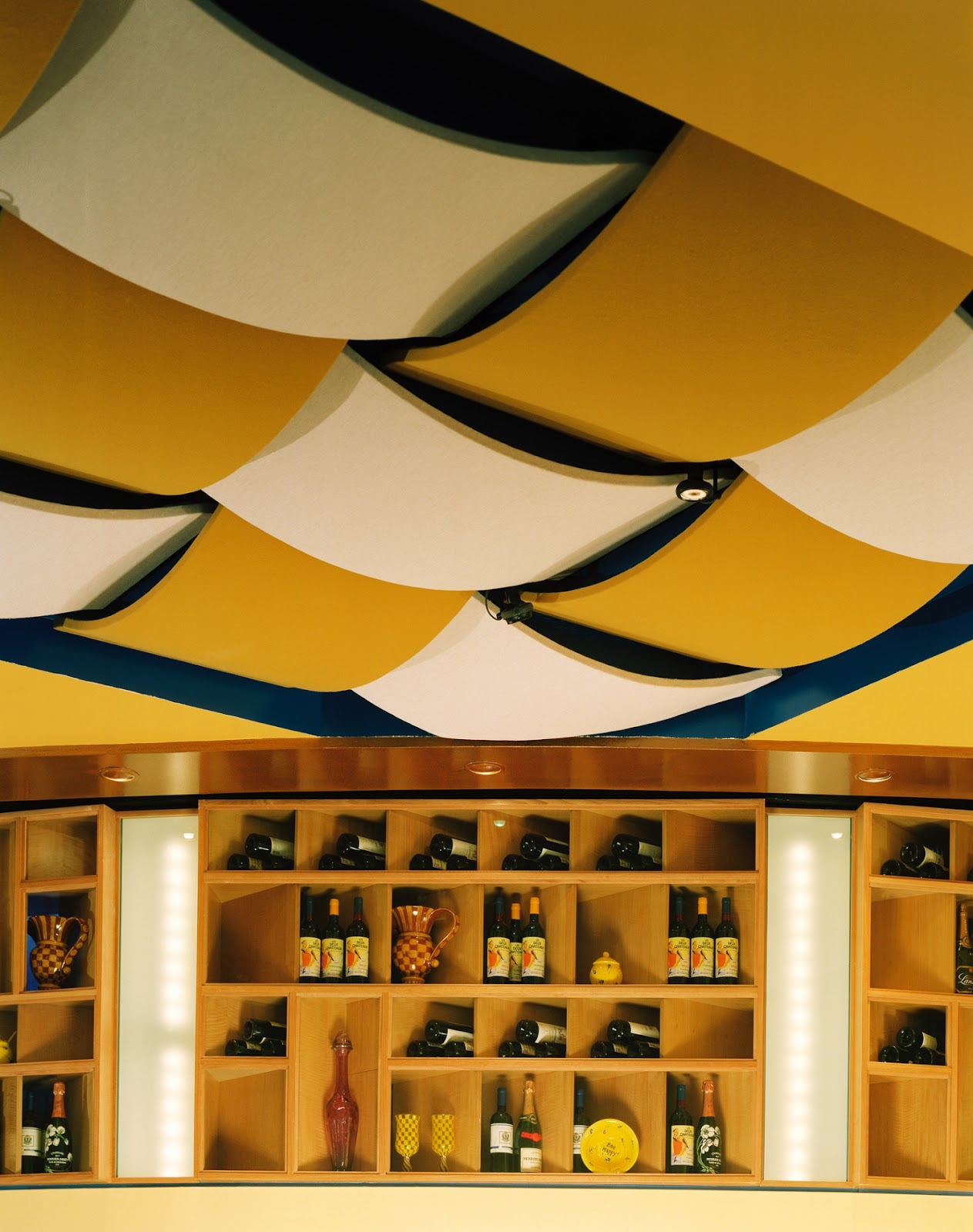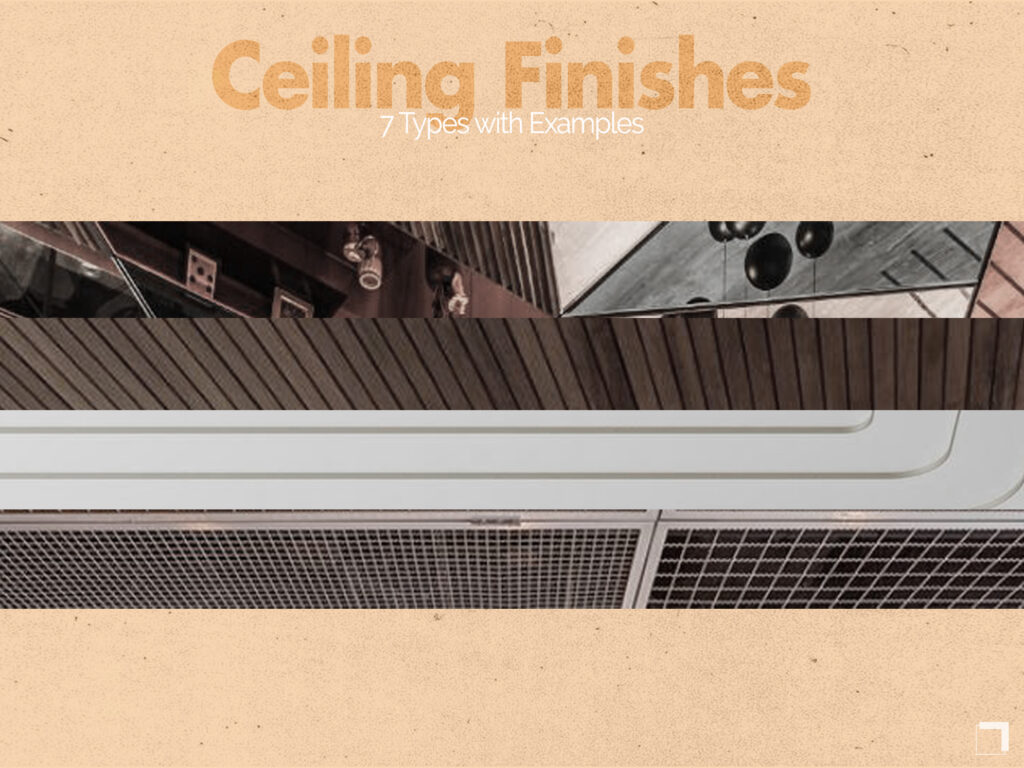While decorating a space, we tend to focus on the four walls that encompass a room. But we often overlook the fifth wall that can make or break the interiors - the ceiling. A plain ceiling is minimal whereas a false ceiling adds a fancy touch while also being functional.
A false ceiling is a secondary ceiling that is suspended from the structural ceiling. Depending on the material that it is made of, it provides a range of benefits and aesthetics.
7 Types of Ceiling Finishes Based on Material Wooden Plaster of Paris Glass Fabric PVC Gypsum Metal 1. Wooden Ceiling Finish They are commonly used as false ceiling materials in the form of plywood, blocks or panels.
Advantages of Wooden CeilingEasy to install Available in many colors and grain patterns Durable Sound absorbing Disadvantages of Wooden CeilingProne to water and termite damage High maintenance Not fire-resistant Uses Used in residential and commercial buildings for a rustic vibe.
Gateway building in Trinity College, Melbourne by McIldowie Partners Wooden Ceiling Finish at Gateway building in Trinity College This building uses a wood finish for its ceiling to give it a rustic vibe while also being functional.
2. Plaster of Paris as a Ceiling Finish This type of ceiling is made by applying plaster of paris paste on wooden or metal boards.
Advantages of POP as a Ceiling FinishSmooth finish Can be molded Lightweight and durable Fire resistant Is a good thermal insulator Disadvantages of POP as a Ceiling FinishNot water resistant Difficult application Not easy to repair and is labor intensive Uses Used in highly decorative interiors
Decorative plaster of Paris false ceiling by Dede Studios Decorative plaster of Paris false ceiling by Dede Studios This house, located in Saint Petersburg, has a modern ceiling design using plaster of Paris. The material gives a highly smooth and elegant finish.
It is a transparent or translucent false ceiling material.
Advantages of Glass as a Ceiling FinishAesthetically pleasing Available in many colors and finishes Makes the room appear bigger Disadvantages of Glass as a Ceiling FinishExpensive Dust collected is easily seen Delicate material needs to be handled with care Uses Used in restaurants, libraries, jewelry shops
Glass false ceiling by Design Scope Studios Glass false ceiling by Design Scope Studios This residence in Gujarat has a multi-colored glass false ceiling, adding some aesthetics to the minimally designed space.
4. Fabric This material is used in false ceilings purely for aesthetic purposes.
Advantages of Fabric as a Ceiling FinishCheap Easy installation Good for temporary structures Disadvantages of Fabric as a Ceiling FinishLow light transferring capacity Stains easily Uses Used in exhibition halls, and restaurants for decoration
Fabric ceiling by Bentel and Bentel Architects Fabric ceiling by Bentel and Bentel Architects This iconic fabric false ceiling is in the Medi restaurant, New York. The ceiling design was made to match the decor and vibe of the space.
Polyvinyl chloride is a commonly used false ceiling material, to incorporate functions like lighting and air vents.
Advantages of PVC as a Ceiling FinishCost-effective Easy installation and maintenance Durable and waterproof Available in different colors and finishes Disadvantages of PVC as a Ceiling FinishUses The finishes do not look elegant
Used in bathrooms, toilets, and basements.
PVC ceiling by Seferin Arquitetura PVC ceiling by Seferin Arquitetura This false ceiling in Brazil is made of PVC, while also adding in a wooden texture.
6. Gypsum They are used in the form of prefabricated boards, panels or ceiling tiles
Advantages of Gypsum as a Ceiling FinishLightweight Customisable color and texture Fire resistant Thermal and acoustic insulation Disadvantages of Gypsum as a Ceiling Not water resistant Difficult to remove or repair They are used in combinations with air conditioning systems. Gypsum ceiling by DeDe Studios Gypsum ceiling by DeDe Studios This gypsum false ceiling design in a boutique hotel in Moscow gives a modern and sleek look for the space.
7. Metal They are widely used for false ceiling due to their shiny appearance
Advantages of Metal as a Ceiling Finish Easy to install and maintain Lightweight Fire resistant Easy to remove and attach Available in many textures Disadvantages of Metal as a Ceiling Finish Need to be protected from corrosion Costly Uses They are used in homes, offices, industries, etc
Metal ceiling by Bloco Arquitetos Metal ceiling by Bloco Arquitetos The false ceiling design in the Authorial restaurant in Brazil was done using metals, adding to the aesthetics of the space.
Depending on the material, the false ceilings dictate the aesthetics of the room while adding many benefits.
Also Read:
10 Innovative Sustainable Materials in Architecture
7 Sustainable Roofing Materials for Your Roof Design
12 Types of Wall Paneling For Your Interior Design








